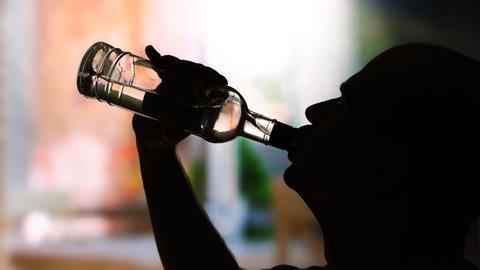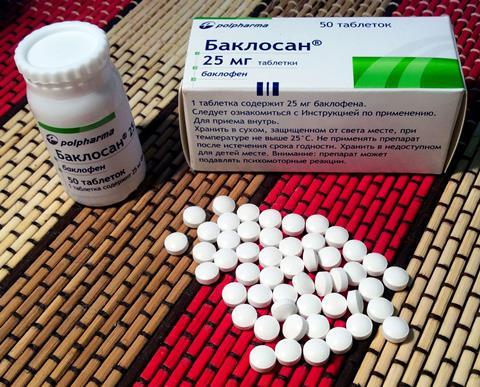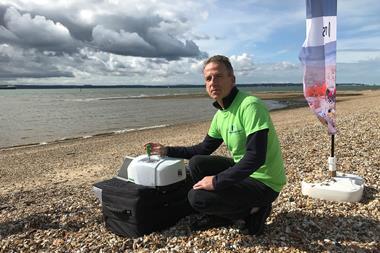Ben Valsler
Addiction ruins lives and destroys families. So the promise of a simple pill to treat it has understandable appeal, but as usual – it’s a little more complicated than that. Here’s Enna Guadalupe.
Enna Guadalupe
From the outside, French-American Cardiologist, Olivier Ameisen was a very successful doctor. He owned his own private practise in Manhattan, and was the proud bearer of several medical awards. But behind closed doors he held a deep secret. He was an alcoholic, and like many people with the same addiction, every single treatment had failed him.

Until one day in 2000, when Ameisen stumbled upon a New York Times article which explored the use of baclofen in a cocaine addict’s road to recovery. After 2 years of researching baclofen, Ameisen took the plunge and decided to become his own guinea pig in March 2002. He started taking the drug with little knowledge of its potential side effects or outcomes, saying later in an interview that ‘it was more dignified to die during my own clinical experiment than it was to die of alcoholism.’
Within a few days of treatment, Ameisen noticed that his cravings had diminished.
Baclofen, known under its tradename Lioresal, is a commonly prescribed medication to treat the muscle spasticity that results from spinal cord injury or multiple sclerosis. First developed to treat epilepsy by Swiss chemist Heinrich Keberle in 1962, baclofen’s effects were disappointing. But despite being marketed as a muscle-relaxant, baclofen has been dubbed a ‘cure’ for sufferers of addiction – whether that’s to alcohol, drugs, binge-eating or gambling. In 2008, Ameisen published his book Le Dernier Verre which translates to The last glass or The end of my addiction detailing his recovery from alcoholism.
‘By completely suppressing my addiction, baclofen saved my life. I believe it can save and improve the lives of many others by completely suppressing their addictions, and I have written this book to that end.’
Inspired by his book, an anonymous donor gave half a million euros (£450,000) to the University of Amsterdam in the Netherlands to initiate a clinical trial of treating alcohol addiction with high-dose baclofen. This triggered a global surge in people trying the drug in a bid to overcome alcoholism – with many people pleading their doctors to prescribe them with off-label baclofen or purchasing the drugs online.

But how could a muscle relaxant be used to treat addiction?
Baclofen works by activating receptors in the brain that are sensitive to gamma-aminobutyric acid, or Gaba. This reduces nerve cell activity, which makes us feel sleepy and calm. Alcohol activates Gaba receptors and has a similar effect, so researchers believe that baclofen may displace alcohol’s role simply by mimicking its effects.
But, this is not as straight-forward as it seems. Baclofen was not developed with addiction in mind, so interaction with alcohol has been a major cause of concern, with evidence of dangerous side effects including hallucinations, psychosis and delirium. In some cases, baclofen also produced insufferable withdrawal symptoms such as auditory and visual hallucinations, depression and insomnia.
The tragic story of PR executive Anna Sargent, who took baclofen in an attempt to overcome her alcohol dependence, emerged when she was found dead just a few days after stopping treatment. In her final days, Anna had reported feelings of severe depression and intense anxiety due to baclofen withdrawal. Given the high dosage required to treat alcoholism, this is unsurprising and even eludes to the possibility of baclofen dependency, though this is currently under debate.
Promising results from clinical trials have shown baclofen’s effectiveness in treating a range of addictions from alcohol dependency to opiate use. But many question the wisdom of treating addictive behaviours with a drug instead of therapeutic means – it seems that we may simply be replacing one addiction with another.
Ben Valsler
That was Enna Guadalupe with baclofen. Next week, composing a stinky, flammable gas…
Mike Freemantle
In 1904, Elgar and his wife Alice moved from Malvern to Hereford where he set up a chemistry laboratory in the basement. Four years later he moved the laboratory to a shed in the back garden. The same year, he patented a device for making hydrogen sulfide which he called the ‘Elgar sulphuretted hydrogen apparatus.’
Ben Valsler
Join Mike Freemantle next week to find out more. Until then, get in touch with any questions or comments – tweet @chemistryworld or email chemistryworld@rsc.org. Thanks for listening, I’m Ben Valsler.














No comments yet